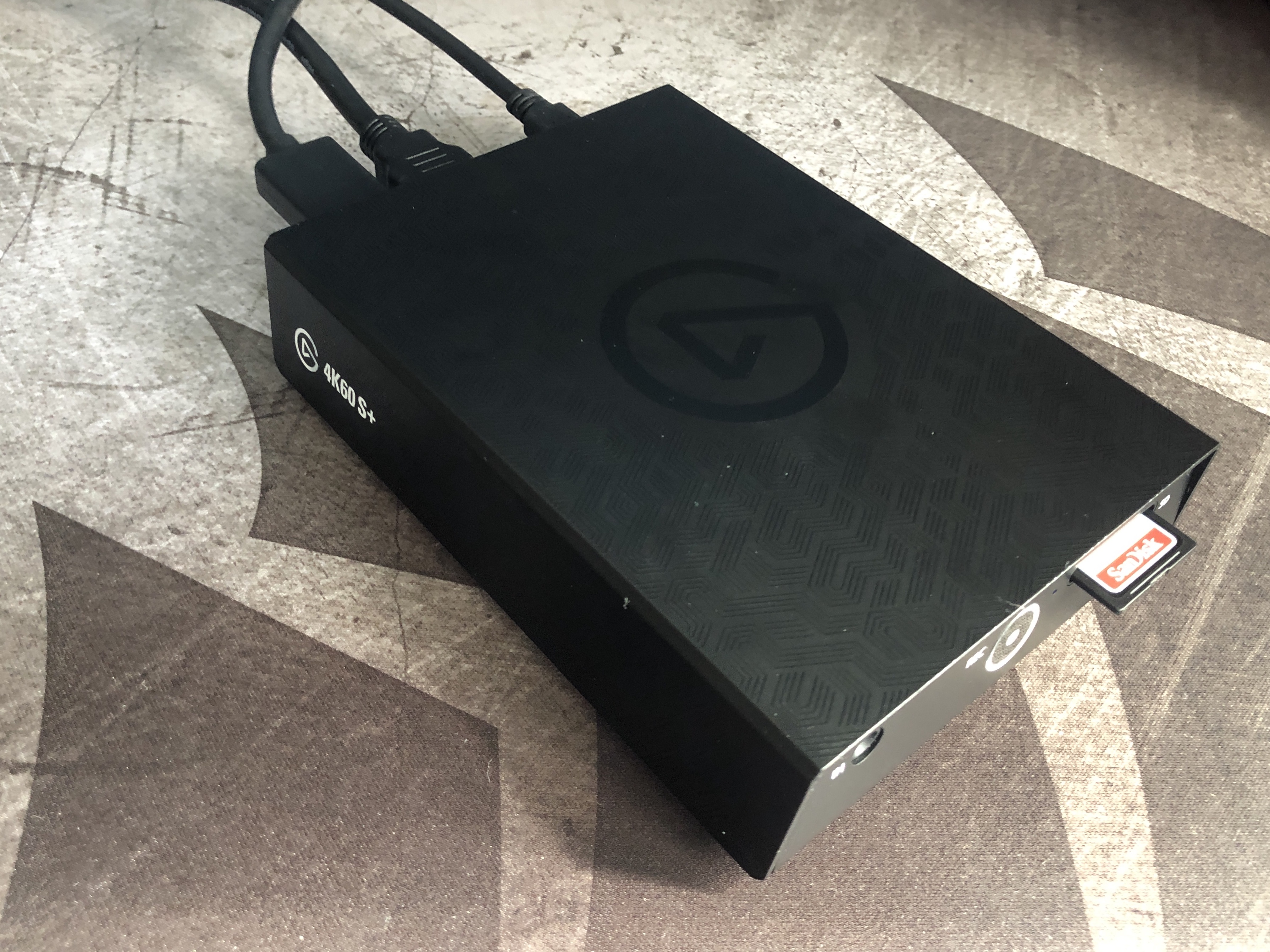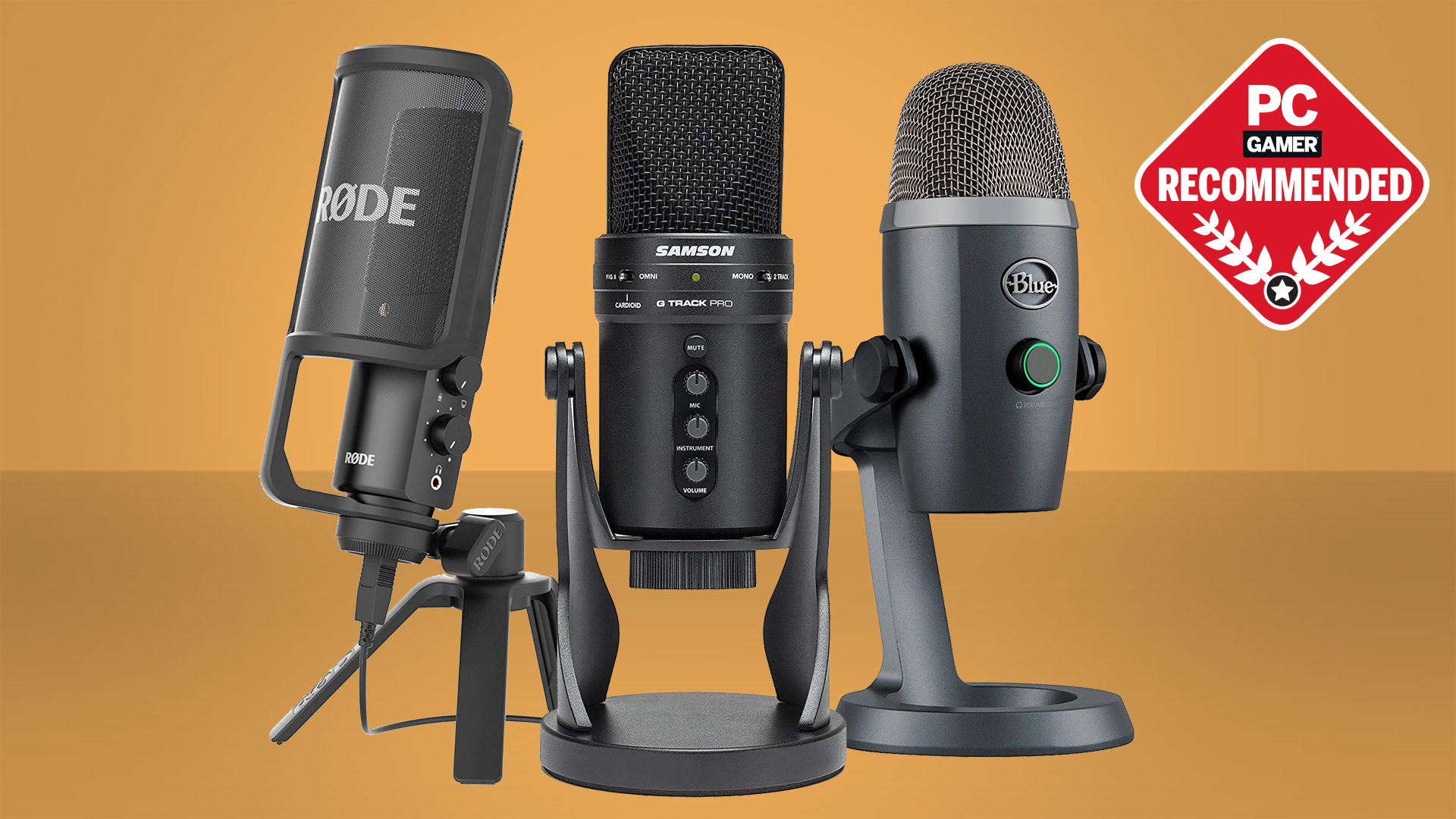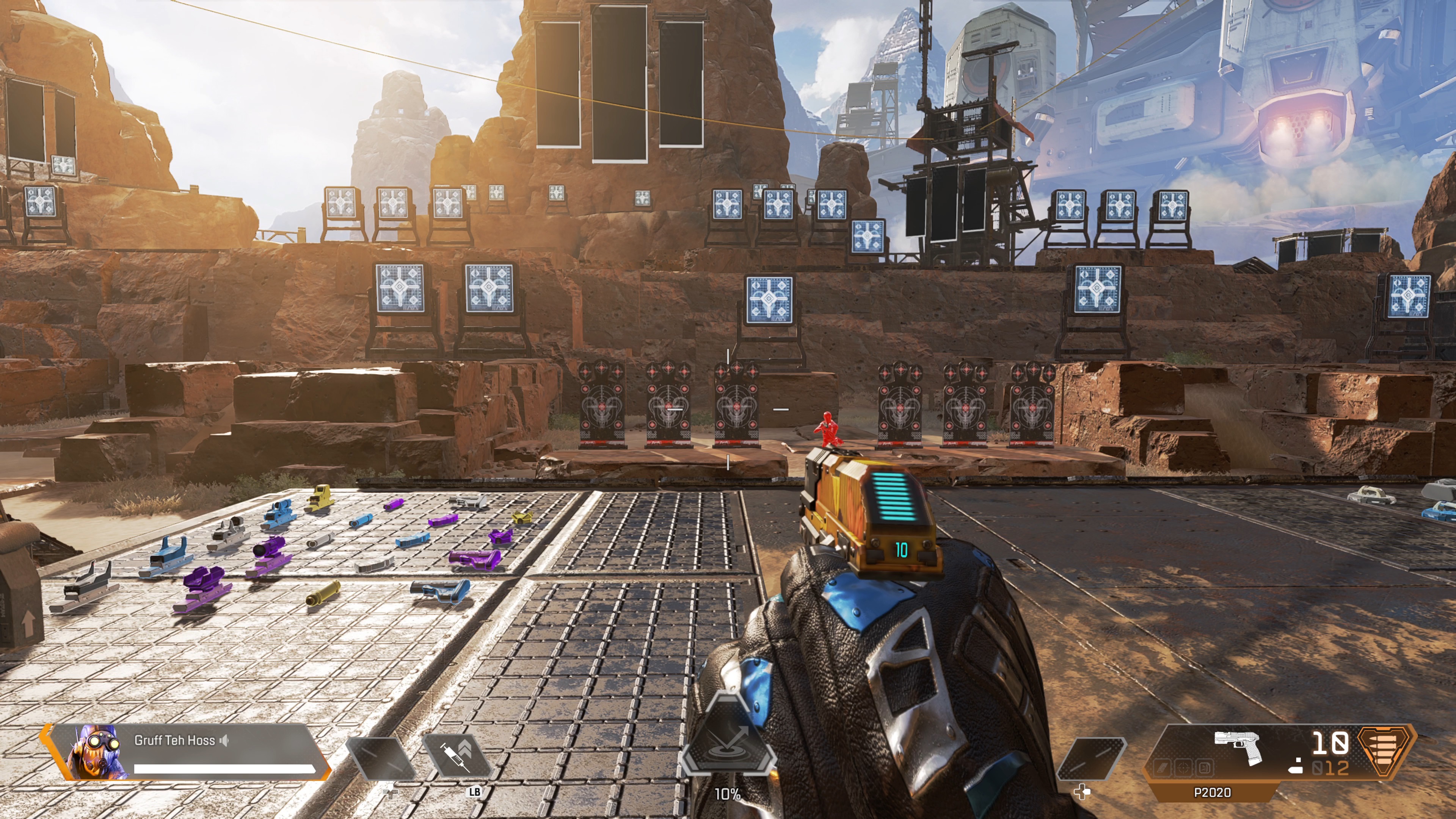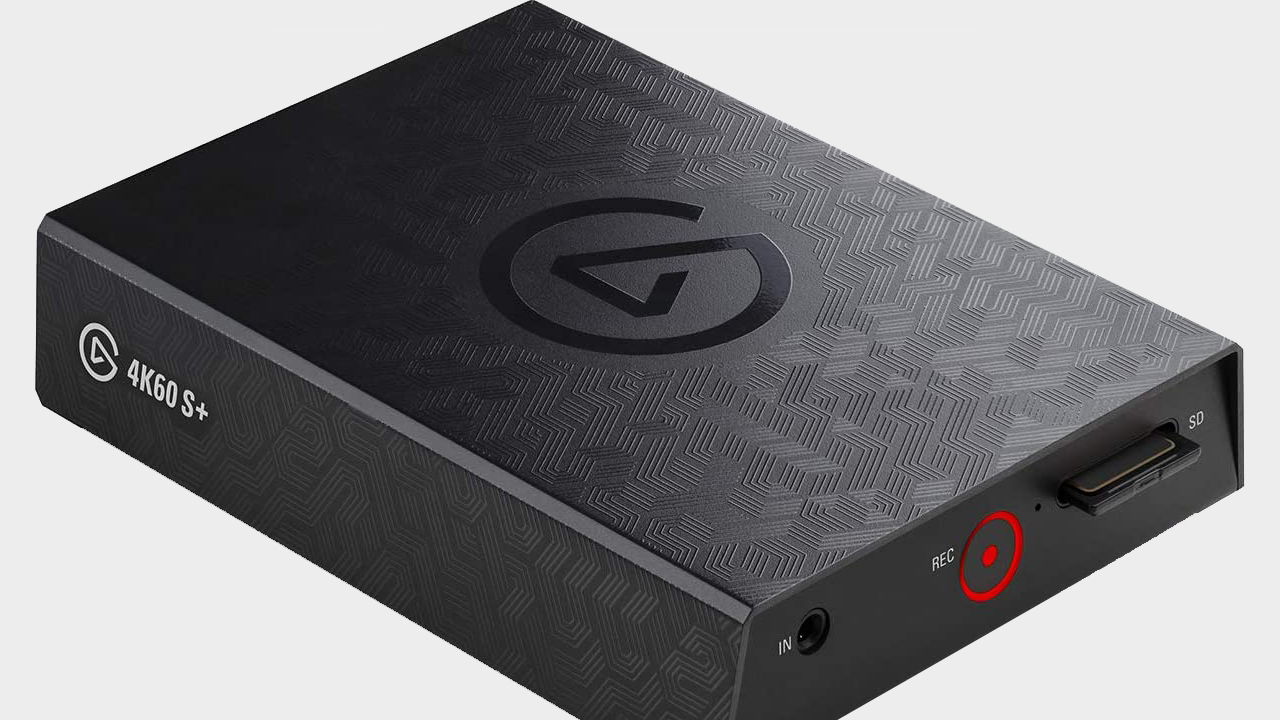Our Verdict
Elgato's first external capture card with standalone recording and 4K60 HDR support isn't quite the home run we were expecting.
For
- 4K60 HDR10 Capture
- Onboard HEVC encoding
- Standalone SD Card recording
Against
- Expensive
- Lackluster software
- No Instant Gameview
PC Gamer's got your back
Elgato has become the standard-bearer of all things related to game capture cards and general streaming. The HD60S+ is the perfect example of that and has been part of the most serious streamers’ inventory for years now because of its ease of use and price. But with the release of the 4K60 S+, Elgato is looking towards the future. And by the future, we mean the upcoming release of next-gen gaming consoles that are 4K ready with HDR support.
Price: $399
Input: HMDI
Output: HDMI (lag-free pass-through)
Supported Resolutions: up to 2160p60
Encoding: HEVC/H.265 HDR, AVC/H.264
Weight: 345g
The Elgato Game Capture 4K60 S+ is for content creators who want to upgrade their channels in a big way. For starters, it can capture 4K HDR gameplay directly to your PC or SD card. Yep, this is Elgato's first capture card to use stand-alone recording via an SD card, which is a massive plus for console games and a long-awaited feature from veteran Elgato users. While the 4K60 Pro does something similar in terms of what it can capture, the S+'s extra portability is what you should care about.
The super useful thing about the stand-alone recording is that the 4K60 S+ will optimize itself in real-time. You don't have to worry about adjusting any settings before recording, so the recording process itself becomes relatively painless. Anyone who has tried to capture footage at a trade show or preview event can tell you how much of a nightmare it can be to do on the fly. But with the new Elgato 4K60S+ you simply plug in the device to a power source (via USB-C), your HDMI in/out, pop in a 256GB SD card (it supports either V30 or UHS-3 SD cards), then hit the record button and you're ready to rock.
I started by recording some 4K footage of Final Fantasy 7 Remake in action on a PS4 Pro. The zero-lag passthrough meant that I was able to bash Shinra lackeys as Cloud without missing a beat or needing a PC. I then hopped on and messed around in the target range in Apex Legends on Xbox One. This time I changed the Xbox One X's display settings to 1080p, and the 4K60 S+ automatically made the changes with no issue.
The footage came out great and it was easy to pull clips from the SD card via card reader. To be honest, I've had more issues managing the video files using the Elgato 4K Capture Utility software. This software is the only place to make changes to the capture card and adjust picture settings.
The real problem is that the software just isn't as robust as the HD Capture Software for Elgato's other cards. Since the 4K60 S+ doesn't work with HD Capture Software, you're forced to use the 4K Capture Utility, which offers no video editing, just raw capturing and commentary track support. If you want to do anything significant with these clips, you're going to have to invest in some third-party editing software.

Then you've got to figure out how to deal with the high dynamic range video you've grabbed. Even professional video editors have their struggles working with HDR footage. Thankfully Elgato has provided some handy guides to help work with HDR video. It also wouldn't hurt to have an HDR-enabled monitor. If you don't, the 4K Capture Utility will use Tonemapping to get a close enough approximation, to try to match the original. That could, however, make the image look flat and desaturated.

Best microphone for gaming: make sure you're heard
Best webcams: be seen while you get your stream on
Best capture cards: lessen the load with a dedicated card
Streamers are most likely not going to care about streaming out at 4K and 60Hz, and if you are, bless you and your super fast internet connection. Bandwidth issues aside, the 4K60 S+ is a decent card for streaming if you are so inclined to go that route. The surprising lack of Instant Gameview (which is available on all other Elgato capture cards) is a major disappointment. Instant Gameview is essentially a near delay-less preview of your gameplay, which is great if you only have a single monitor to work with. My delay seems like it's roughly 200ms but could be upwards to 250ms, according to Elgato. Thankfully, OBS and Xspit have settings to create a delay on your microphone and webcam to match your gameplay.
I'll be honest; I think it's a bit strange that Corsair's first attempt at stand-alone recording after it acquired Elgato would have such a high barrier to entry. If you're a content creator who doesn't bother with 4K (and only deals with 1080p footage), you can pick up the AverMedia Live Gamer Portable 2 Plus that does everything this capture card does for less than half the price. Personally, I think the fact that we still don't have an Elgato HD60 S+ that supports stand-alone recording is a missed opportunity.



*Note* The 4K screens were too big for our CMS so they had to be compressed down in order to be posted. Trust me, they looked great. =/

But being the only external capture card on the market that can capture 4K60 and HDR footage does allow you to record some genuinely spectacular footage to play with and share. The stand-alone recording is a tempting proposition, yet the 4K60 S+ prices itself out of the competition for most content creators.
To truly use this capture card to its full potential, you need a 4K-ready console, 4K monitor with HDR support (not cheap), and a PC beefy enough to edit 4K HDR footage (really not cheap). Let’s not even get into the amount of bandwidth required to upload 4K video, let alone stream it.
The Elgato 4K60 S+ is the capture card of the future... that we aren’t quite ready for yet. It provides some of the best-looking screenshots and videos around, assuming you have the hardware that can handle your high-quality media. Still, the capture market is yet to catch up to the fidelity the 4K60 S+ can deliver.
Elgato's first external capture card with standalone recording and 4K60 HDR support isn't quite the home run we were expecting.

Jorge is a hardware writer from the enchanted lands of New Jersey. When he's not filling the office with the smell of Pop-Tarts, he's reviewing all sorts of gaming hardware, from laptops with the latest mobile GPUs to gaming chairs with built-in back massagers. He's been covering games and tech for over ten years and has written for Dualshockers, WCCFtech, Tom's Guide, and a bunch of other places on the world wide web.


